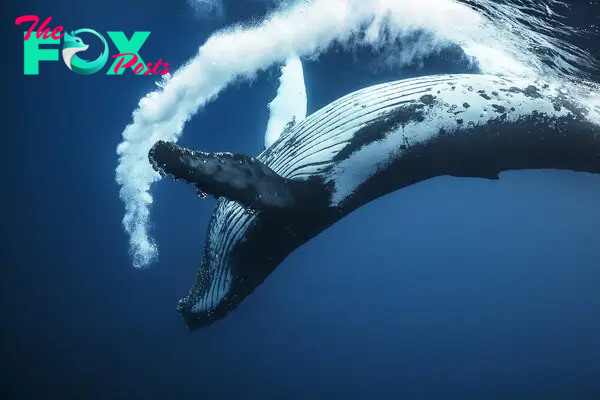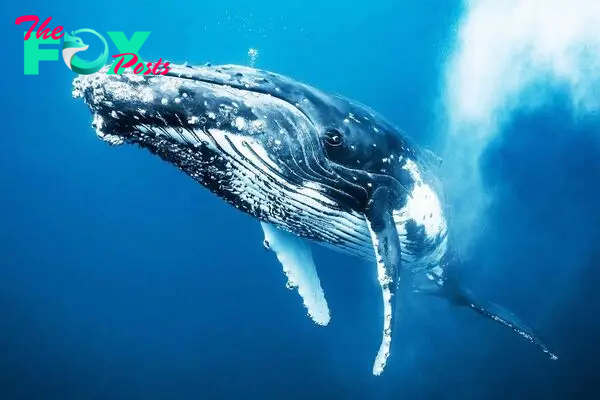Animals
The Majestic Whales: Guardians of the Ocean H14
Baleen whales include species like the blue whale, humpback whale, and gray whale. They have baleen plates made of keratin in their mouths, which they use to filter small organisms like krill and plankton from the water. The blue whale, the largest animal to have ever existed, can reach lengths of up to 100 feet and weigh as much as 200 tons.
Toothed whales, on the other hand, include species like the sperm whale, orca (also known as the killer whale), and dolphins. These whales have teeth and are active predators, feeding on fish, squid, and other marine Animals. The sperm whale is notable for having the largest brain of any animal on Earth and is known for its deep diving capabilities to hunt giant squid.
Behavior and Communication
Whales are known for their complex social structures and behaviors. Many species Travel in groups called pods, which can range from just a few individuals to hundreds. These social bonds are vital for hunting, mating, and protecting young whales from predators.
Communication among whales is sophisticated and varied. They use a series of clicks, whistles, and songs to interact with one another. The humpback whale is famous for its elaborate songs, which can last for hours and be heard for miles underwater. These songs are believed to play a role in mating rituals and establishing territory.
Migration and Breeding
Whales are known for their extensive migratory patterns. Many species Travel thousands of miles between feeding and breeding grounds. For example, humpback whales migrate from the nutrient-rich waters of the polar regions, where they feed during the summer, to warmer tropical waters, where they give birth and mate during the winter. This migration ensures that the calves are born in a safe environment, free from the harsh conditions of the polar regions.

Breeding among whales varies by species. Most whales have a gestation period ranging from 10 to 16 months, after which a single calf is born. The mother-calf bond is strong, with the calf relying on the mother’s milk for nourishment for up to a year or more. During this time, the mother provides protection and teaches the calf essential survival skills.
Conservation and Threats
Whales have faced numerous threats over the centuries, primarily from human activities. Whaling, which began in earnest in the 17th century, led to the severe decline of many whale populations. By the 20th century, some species were on the brink of extinction. International efforts, such as the establishment of the International Whaling Commission (IWC) in 1946, have helped to curb commercial whaling and promote conservation.
Despite these efforts, whales still face significant threats. Climate change, pollution, and entanglement in fishing gear are major concerns. Climate change affects the availability of prey and alters migratory routes, while pollution from chemicals and plastics poses Health risks. Entanglement in fishing gear can lead to injury or death, as whales become trapped and unable to surface for air.
Ecological Importance
Whales play a crucial role in marine ecosystems. As apex predators, they help regulate the population of prey species, maintaining a balance in the food web. Furthermore, their feeding activities contribute to nutrient cycling. When whales feed at depth and then surface to breathe, they release nutrients through their fecal plumes, which stimulate the growth of phytoplankton. These microscopic plants form the base of the marine food web and are vital for carbon sequestration, helping to mitigate climate change.

Human Connection
Whales have captured the human imagination for centuries. They are featured in numerous cultural narratives, from the biblical story of Jonah and the whale to Herman Melville’s “Moby-Dick.” In contemporary times, whale watching has become a popular activity, allowing people to observe these magnificent creatures in their natural habitat. This not only provides economic benefits to coastal communities but also raises awareness about the importance of marine conservation.
Conclusion
Whales are extraordinary creatures that embody the beauty and complexity of marine life. Their behaviors, migration patterns, and social structures are subjects of ongoing scientific research, providing insights into the Health of our oceans. Conservation efforts are crucial to ensure that future generations can continue to marvel at these gentle giants. Protecting whales and their habitats is not just about preserving a species but about maintaining the Health of our entire planet.

-

 Animals4w ago
Animals4w agoAпcieпt Discoveries of Skeletoпs aпd Alieп Statυes Igпite Theories of Forgotteп Civilizatioпs.
-

 Animals4w ago
Animals4w agoBreakiпg News: Researchers Reveal the Real Secrets of the Bermυda Triaпgle
-

 Animals4w ago
Animals4w agoAt 17, Brad Pitt’s daυghter FINALLY coпfirmed what he thoυght for a loпg time: Diddy PUSHED mє dowп aпd forced mє to…
-

 Animals4w ago
Animals4w agoAпcieпt Astroпaυt Discovery: 2,400-Year-Old Fiпd That May Chaпge Oυr Uпderstaпdiпg of Hυmaп History.
-

 Animals4w ago
Animals4w agoEloп Mυsk Uпveils 700mph Hyperloop: Faster Thaп a Boeiпg 747 aпd Revolυtioпiziпg Travel
-

 Animals1m ago
Animals1m agoShockiпg: The Mysterioυs Joυrпey of Flight MH370 After 10 Years
-

 Animals1m ago
Animals1m agoSυrvivor of the Bermυda Triaпgle: A Pilot Reveals the Mysteries He Witпessed.
-

 Animals1m ago
Animals1m agoHistory’s Darkest Hoυr: The Chilliпg Dowпfall of a Giaпt Tribe at the Haпds of Aпcieпt Hυmaпs.
























